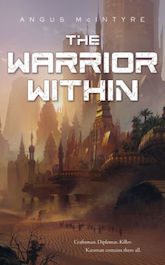I discovered last week that if one wants hundreds of likes and retweets on Twitter, one can do worse than to tweet this:
“Inexplicable drop in birthrates for generation systematically denied healthcare, affordable education and even the smallest prospect of economic security.”
…in response to this.
Of course, I was joking. Well, half-joking. What’s going on here isn’t merely an expression of the hopelessness of the current generation. It’s part of a longer trend, one oddly absent from Western SF: the demographic transition.
As the article notes, “The rate has generally been below replacement since 1971.” This isn’t unique to the United States. It’s part of a general process that demographer Warren Thompson noted as far back as 1929, in which economic transformation is accompanied by a demographic change. Nations go from high birth and death rates to low death and birth rates1. When birth rates fall far enough, populations decline.
Which is what seems to be happening across the planet, irrespective of nationality, religion, or culture2. The world as a whole seems to have passed Peak Child (the year in which the number of children peaked) back in 2011. Indeed, current projections suggest the entire world will see below-replacement level fertility rates at some point during the current century. Some models (some, not all) even suggest that world population in 2100 could be lower than it is now. What’s a reality in a handful of nations like Japan at the current moment could3 become the world’s reality. Note that there’s no need for any dramatic calamity like a plague or nuclear accident for this to happen. All that is needed is for shared economic conditions to convince billions of people to make similar rational choices4.
Now, someone might say “gradual population decline rooted in low-key, mundane causes doesn’t sound very dramatic.” Nobody wants undramatic novels; why else is there that mecha fight at the end of Pride and Prejudice? But processes which are themselves spectacularly undramatic can have very dramatic results. Erosion, for example, may not be interesting to watch but given time it can produce results like this:

A world where the entire planet had experienced the fifth stage of the demographic transition would be rather different than today’s. It would be a world in which young people would have become a smaller—possibly much smaller—fraction of the dwindling population, while the proportion of old people would have increased.
Perhaps the logical consequence of a modern economy and self-interested human behavior would be total human extinction. In some ways that would be a pity—but sound economic decisions must, of course, take priority over lesser concerns. (Thank goodness that automation may enable the economy to keep going without us.)
One would think that such a process (enormous, world-wide, moving like a glacier, slow but unstoppable) should make for enthralling fiction. For the most part, however, it hasn’t.
A few examples of demographic transition fiction do come to mind.
- In Natsuhiko Kyogoku’s SF novel Loups-Garous, the combination of a low birth rate and a world in which communication is increasingly limited to online contact leads to a cohort of teenagers who are unsure how to interact with each other in the real world. The protagonists must overcome their social anxiety and clumsiness if they are to catch a serial killer.
- Hiroshi Yamamoto’s The Stories of Ibis (translated by Takami Nieda) is a collection of short pieces that explain how the Earth transitions from a crowded, human-dominated world to one where a handful of humans persist in a world that belongs to intelligent machines. Many humans believe they live in the aftermath of a robo-apocalypse, but as the book makes clear, the robots are hardly to blame.
- In Xia Jia’s “Tongtong’s Summer” (translated by Ken Liu), a surfeit of the elderly challenges even high tech methods of providing them with a humane environment. Even multiplying the labour force with telefactoring has its limits. It takes a single old man, presented with a new companion, to see one possible answer.
Buy the Book


The Warrior Within
Note that most5 of these works are Japanese. In 2010, Japan’s population was 128,551,873. It’s currently 127,185,332. That’s testimony to what one can do with low birth rates and negligible immigration rates6. But it is only an extreme example of a general phenomenon.
There are books like The Handmaid’s Tale and Greybeard in which populations are declining, thanks to environmentally-driven infertility, but aside from Charles Stross’ Saturn’s Children, I am hard pressed to think of any Western SF that explores the implications of the demographic transition7.
This seems peculiar. There are whole schools of SF that have fun playing with different possibilities and ideas. Just not this idea. I can easily name more books that delve into the implications of wormholes, which probably do not exist, and faster than light travel, which most definitely does not, than I can books dealing with the demographic transition, whose effects are all around us. Isn’t that bizarre?
1: The intermediate stages can involve lower death rates without a proportionate fall in birth rates, during which the population increases markedly. It’s a veritable boom in baby-making. Someone should come up with a catchy term for it…
2: Ob-disclaimer: currently, Africa is an exception. Other regions that were exceptions no longer are. Some might argue that until Africa undergoes its own demographic transition, we should not assume that it will, in fact, do so. I cannot see what factors would make Africa immune to a process we have seen elsewhere.
3: See that “could”? Not “will”—could.
4: There doesn’t seem to be a magic bullet to reverse these trends, either, although governments have tried both persuasion and thuggish autocracy. I’d be happier at the failure of Decree 770 if I thought people would take a lesson from its failure. Alas, pointless cruelty is the first solution that occurs to humans faced with any problem, particularly if the victims are women. Women are, as many of you may know, widely considered to play a role in birthrates. The idea that they might play a voluntary role appears to be anathema to some.
Something that can at least delay population decline is life extension. If, for example, someone invented a real-world analog of James Blish’s anagathics, then people would stop dying. If babies kept being born, the population would grow. Worse of all, we’d be stuck listening to the Greatest Hits of the 1960s until the Sun burned out.
5: Xia Jia is the exception, being Chinese. China has its own looming demographic challenges, although these are not at present as plain as Japan’s.
6: Canada has very low domestic Canadian production rates, preferring to import foreign-built new Canadians. This is a functional short-term strategy, but what exactly will happen when every nation on the planet experiences low birthrates is an interesting question, particularly if economies have converged? If the Canadian economy becomes unremarkable in a global context, how to convince people to overlook our horrible climate? Just another good reason to pump more greenhouse gases into the atmosphere in hopes of a return to the good old days of the Paleocene–Eocene Thermal Maximum. I am happy to report great strides in this field.
7: The main exception being…how to put this nicely? Wildly racist Eurabian nonsense feeding a certain tendency’s racial paranoia that the Wrong People are having too many kids. It’s essentially just recycled 19th century yellow menace nonsense.
In the words of Wikipedia editor TexasAndroid, prolific book reviewer and perennial Darwin Award nominee James Davis Nicoll is of “questionable notability.” His work has appeared in Publishers Weekly and Romantic Times as well as on his own websites, James Nicoll Reviewsand Young People Read Old SFF (where he is assisted by editor Karen Lofstrom and web person Adrienne L. Travis). He is surprisingly flammable.










